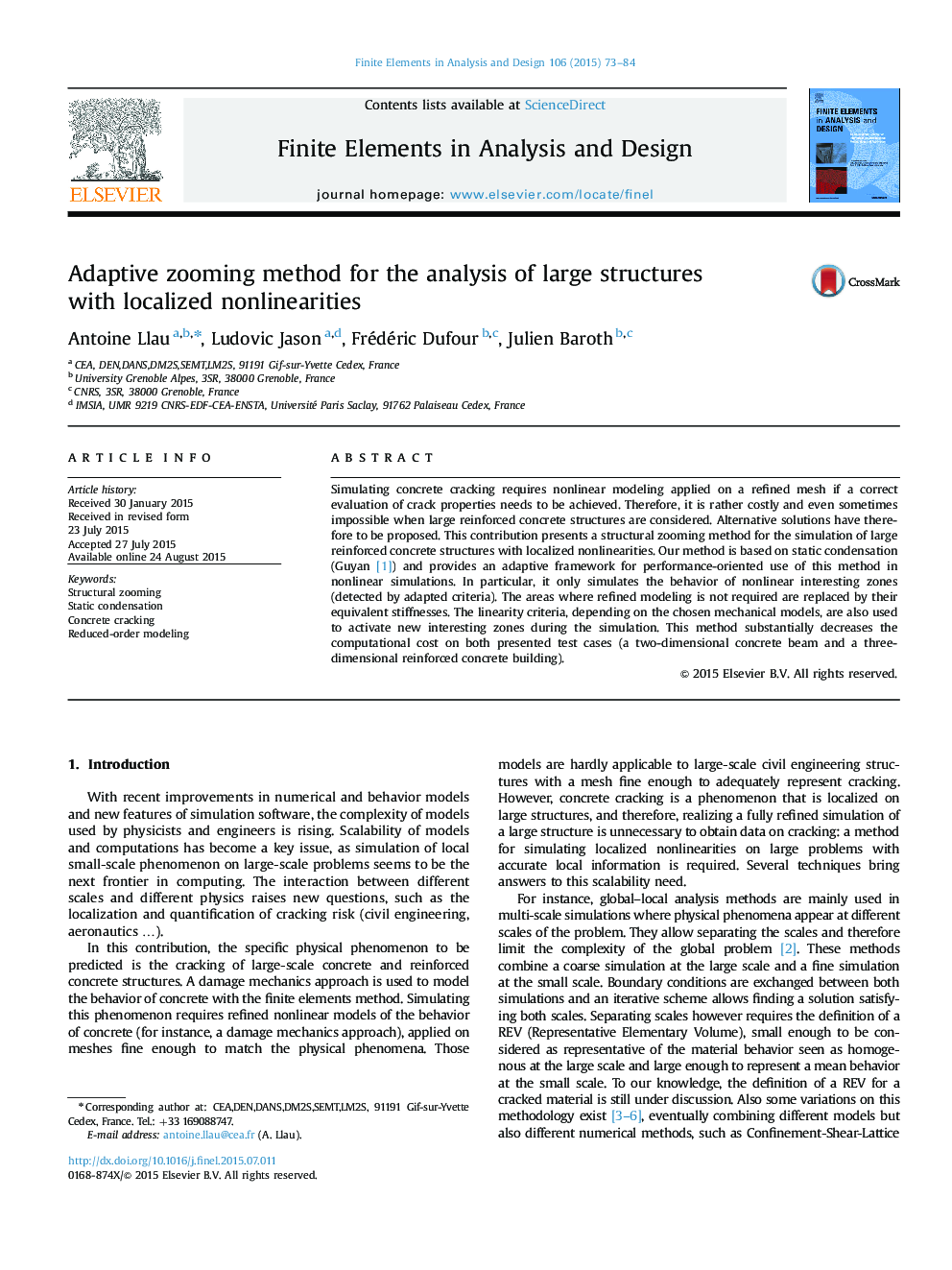| Article ID | Journal | Published Year | Pages | File Type |
|---|---|---|---|---|
| 513806 | Finite Elements in Analysis and Design | 2015 | 12 Pages |
•A method for reducing the dimension of large-scale mechanics problems is proposed.•The method condenses linear areas in the problem and simulates only nonlinear areas.•The method adapts to simulate more areas when damage is detected in new areas.•On classical structural simulations, the computational load is reduced.
Simulating concrete cracking requires nonlinear modeling applied on a refined mesh if a correct evaluation of crack properties needs to be achieved. Therefore, it is rather costly and even sometimes impossible when large reinforced concrete structures are considered. Alternative solutions have therefore to be proposed. This contribution presents a structural zooming method for the simulation of large reinforced concrete structures with localized nonlinearities. Our method is based on static condensation (Guyan [1]) and provides an adaptive framework for performance-oriented use of this method in nonlinear simulations. In particular, it only simulates the behavior of nonlinear interesting zones (detected by adapted criteria). The areas where refined modeling is not required are replaced by their equivalent stiffnesses. The linearity criteria, depending on the chosen mechanical models, are also used to activate new interesting zones during the simulation. This method substantially decreases the computational cost on both presented test cases (a two-dimensional concrete beam and a three-dimensional reinforced concrete building).
